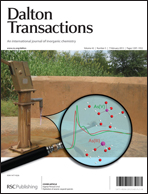Ten neutral monomeric, dimeric and polymeric mercury(II) complexes of compositions HgX2L (3, 8), [HgX2L]2 (1, 2, 4–6 and 7), [Hg(NO3)2L]n (9) and {[Hg(N3)2L]2}n (10) where X = chloride, bromide, iodide, nitrate and azide, and L = (E)-N-(pyridin-2-ylmethylidene)arylamine, are described. Compounds 1–10 were characterized by elemental analyses, and IR and 1H NMR spectroscopic studies. The solution-state photophysical properties of the complexes are highly dependent on the anions as seen in the fluorescence emission features. Single-crystal X-ray crystallography showed that the molecular complexes can aggregate into larger entities depending upon the anion coordinated to the metal centre. Iodide gives discrete monomeric complexes, chloride and bromide generate binuclear complexes formed through Hg–X–Hg bridges, while nitrate and azide lead to 1D coordination polymers. The significant differences in the observed aggregation patterns of the compounds indicate that the anions exert a substantial influence on the formation of the compounds. A further influence upon supramolecular aggregation is the presence of methyl substituents in L3 and L4, which generally enhances the probability of forming supramolecular π⋯π interactions involving the five-membered C2N2Hg chelate rings in their crystal structures.

You have access to this article
 Please wait while we load your content...
Something went wrong. Try again?
Please wait while we load your content...
Something went wrong. Try again?


 Please wait while we load your content...
Please wait while we load your content...